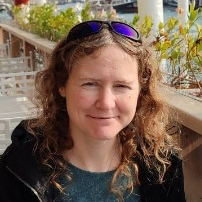Benthic Biodiversity from Microbes to Multicellular Organisms and Its Functional Interplays
A special issue of Biology (ISSN 2079-7737). This special issue belongs to the section "Marine Biology".
Deadline for manuscript submissions: 30 April 2024 | Viewed by 17338
Special Issue Editors
Interests: marine benthic ecology; species distribution modelling and habitat mapping; macrofauna communities of the Baltic Sea; biogeographic comparisons; ecosystem functioning; biological traits; bioturbation and bioirrigation; biodiversity and its response to environment, climate change and bottom trawl fishing
Interests: marine microbiology; structure and function of pelagic and benthic bacterial communities; microbially mediated biogeochemical processes in marine ecosystems; bacterial carbon remineralization
Special Issue Information
Dear Colleagues,
Benthic biodiversity plays an important regulatory role in marine ecosystem functioning, including the transport of energy, solutes and materials within sediments and across the sediment–water interface. Biological interactions within and between components often expose co-structure and may superimpose on the relationships between biodiversity and its abiotic drivers, potentially masking or even reversing them. Due to limited accessibility, the seafloor environment still hides many of its inhabitants and their functions from us, even in the most studied regions.
Progress made in global and regional analyses has revealed the potential controlling mechanisms of large-scale benthic biodiversity patterns. Changes in benthic communities along natural gradients have been the focus of ecological research for decades; however, with a strong bias on macrozoobenthos and biogeochemical elemental cycling. The structure and function of other organism groups living in and on sediment, including prokaryotes, protists, microphytobenthos and meiofauna, are largely understudied. Particularly, the monitoring of benthic habitats is necessary to expand our insights into the underlying mechanisms of spatial and temporal variability. Elucidating the interactions between different components of the benthic biota and parameterizing the implications of biodiversity changes for ecosystem functions along natural gradients and in response to anthropogenic disturbance remains a continuing challenge.
This Special Issue aims to explore how changes in the diversity of benthic communities, from prokaryotes to macrofauna, and the link between them impact community metabolism, biogeochemical fluxes and transport processes. Observational, experimental and modelling studies that showcase the latest developments in the field, particularly those tackling interactions between multiple biological compartments, are highly encouraged.
Dr. Mayya Gogina
Dr. Judith Piontek
Guest Editors
Manuscript Submission Information
Manuscripts should be submitted online at www.mdpi.com by registering and logging in to this website. Once you are registered, click here to go to the submission form. Manuscripts can be submitted until the deadline. All submissions that pass pre-check are peer-reviewed. Accepted papers will be published continuously in the journal (as soon as accepted) and will be listed together on the special issue website. Research articles, review articles as well as short communications are invited. For planned papers, a title and short abstract (about 100 words) can be sent to the Editorial Office for announcement on this website.
Submitted manuscripts should not have been published previously, nor be under consideration for publication elsewhere (except conference proceedings papers). All manuscripts are thoroughly refereed through a single-blind peer-review process. A guide for authors and other relevant information for submission of manuscripts is available on the Instructions for Authors page. Biology is an international peer-reviewed open access monthly journal published by MDPI.
Please visit the Instructions for Authors page before submitting a manuscript. The Article Processing Charge (APC) for publication in this open access journal is 2700 CHF (Swiss Francs). Submitted papers should be well formatted and use good English. Authors may use MDPI's English editing service prior to publication or during author revisions.
Keywords
- benthic organisms
- biological response
- ecosystems
- natural gradients
- anthropogenic pressures
- biological interactions
- macrofauna
- meiofauna
- protists
- prokaryotes
- microbial mediated biogeochemical processes
- nutrient fluxes
- sediment biogeochemistry







